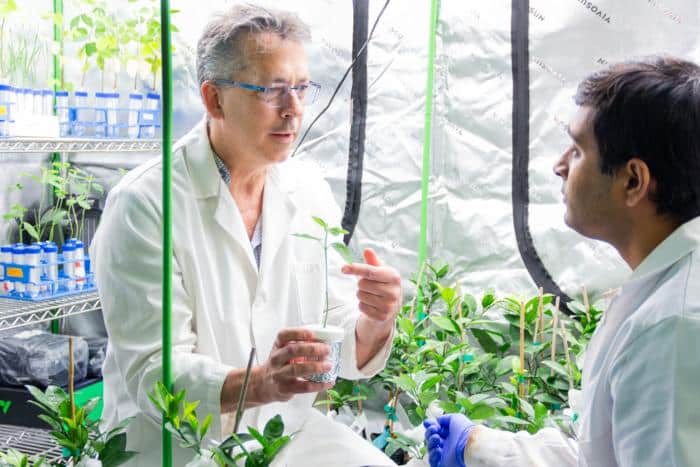Carnegie Mellon University researchers are using nanomedicine and digital twin technologies to tackle climate change, improve crop yields and ensure future food security.
Researchers at Carnegie Mellon University's School of Civil and Environmental Engineering are leveraging discoveries in nanomedicine and digital twin technologies to explore the emerging field of plant nanobiotechnology. Their goal is to address unsustainable agricultural practices and meet growing global food demands.
Currently, agriculture accounts for 14-28% of global greenhouse gas emissions and 70% of freshwater withdrawals. These problems are exacerbated by factors including extreme weather events, widespread crop pests and rapidly degrading soils, highlighting the urgent need for new agricultural practices and technologies.
In a study recently published in Nature Nanotechnology, researchers highlight that plant nanobiotechnology can be used to deliver nanoforms of active agents, such as micronutrients or plant protection products, to specific biological targets. This approach could make plants more resistant to diseases and environmental stresses (such as extreme heat or high soil salinity), improving crop yields and efficiency. However, plant nanobiotechnology is still in its infancy, and many challenges associated with the implementation of new tools such as nanocarriers remain unsolved.
To address these challenges, civil and environmental engineering professor Greg Lawrie, along with co-corresponding author Juan Pablo Giraldo of the University of California, Riverside, colleagues and students, are taking inspiration from the established field of nanomedicine.
“We found that the challenges of using nanocarriers to deliver nutrients to plants are similar to those of nanomedicine, which has the advantage of being an established and well-studied field,” Rowley said in a news release. “While there are some important differences between plants and animals, many of the key parts of our research are informed by nanomedicine, such as identifying nanocarrier designs that ensure active substances are effectively packaged, delivered to and released where they are needed.”
The researchers found that, like nanomedicines, nanocarriers are most effective when they interact well with target organisms, avoid key biological barriers, and leverage natural processes while minimizing unintended effects. The study also explored the innovative approach of creating a “digital twin” of a plant to evaluate the effectiveness of different nanocarrier designs.
Digital twins, a groundbreaking modeling technique, are widely used in infrastructure management, predictive maintenance, and manufacturing. The ability to analyze structures and their surroundings, process information, and use it to inform, predict, and correct real-world outcomes has revolutionized data processing.
Just as medical researchers use “digital patients” to simulate how drugs interact with the human body, Rowley and his team aim to use “digital plants” to design nanocarriers that deliver nutrients to specific plant organs, improving the precision and efficiency of nutrient delivery and improving plant resilience and agricultural productivity.
“The precise delivery of active substances to plants through nanotechnology has the potential to transform agriculture, but there are significant technical challenges that must first be overcome before the full benefits can be realized,” said Rowley. “I am optimistic about the future of plant nanobiotechnology approaches and the beneficial impact they can have on our ability to produce food sustainably.”
Further information: Research in Nature Nanotechnology



